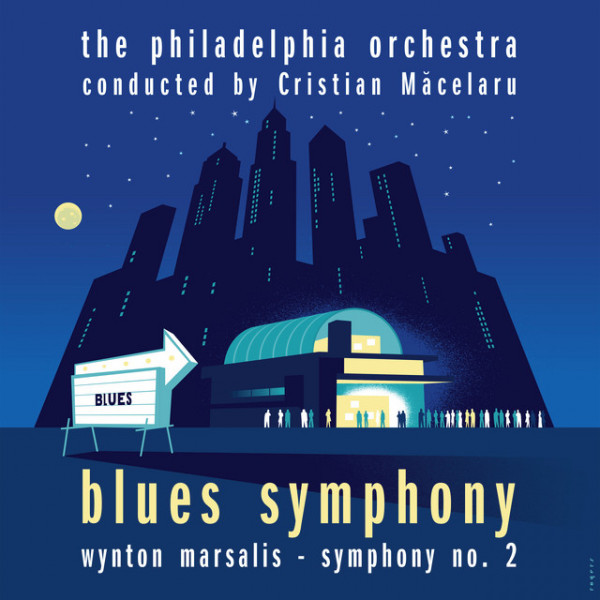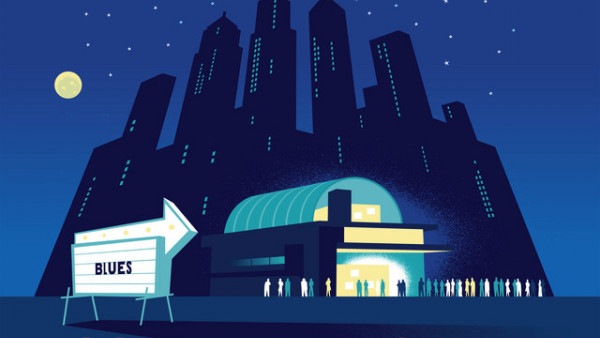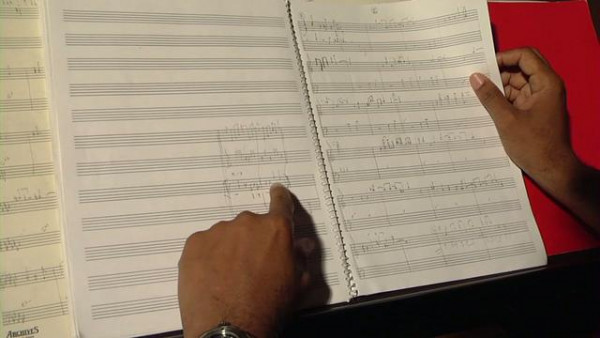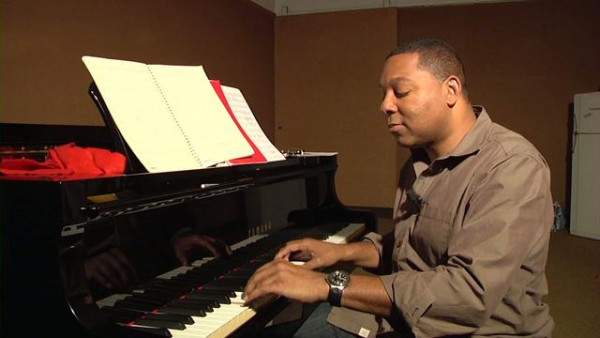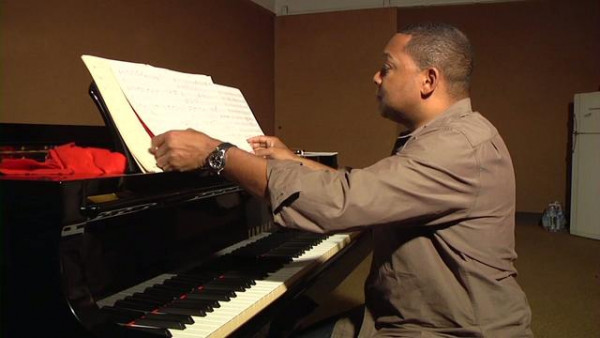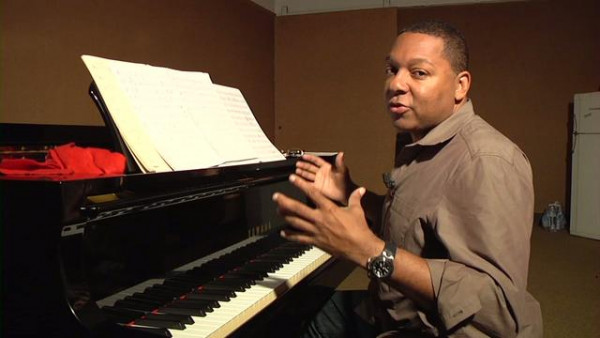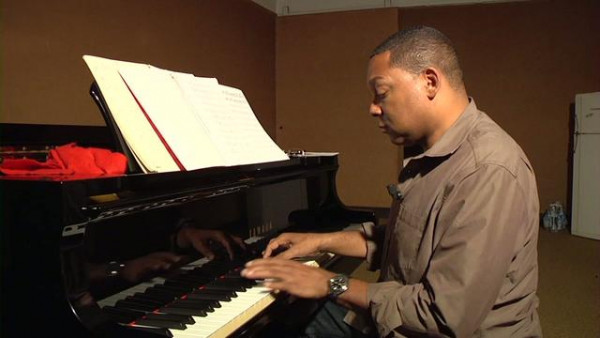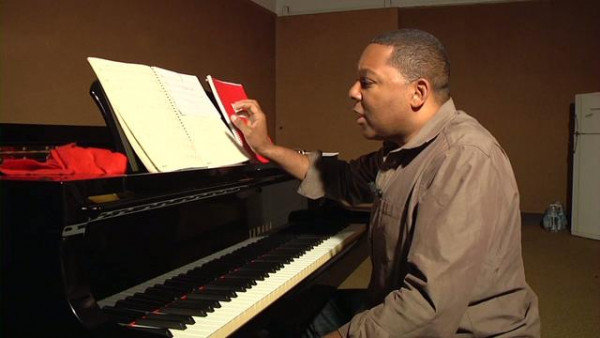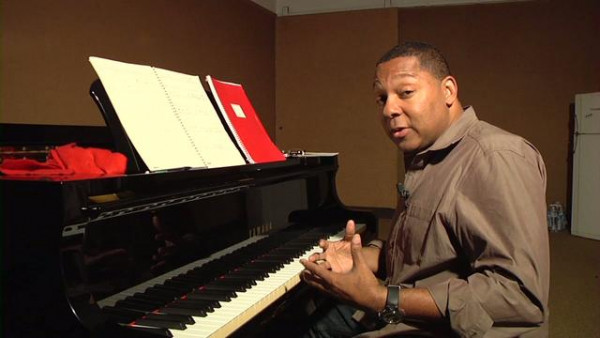Wynton Marsalis symphony at Philadelphia Orchestra an aerobic workout that inspired fight and flight
“Everything about Wynton is epic.”
Such was the terse introduction by guest conductor Cristian Macelaru at the Philadelphia Orchestra’s Saturday outing with Wynton Marsalis’ Blues Symphony. More couldn’t credibly be said prior to the rambunctious, seven-movement, hour-long, high-traffic, multi-genre, multi-everything monster of a symphony that could well have devoured the Kimmel Center and the rest of Philadelphia along with it.
The piece even has a built-in encore: a final movement with a false ending, followed by a madcap coda that left this somewhat bewildered listener reasonably charmed.
Most of the audience stayed and cheered what had to be the most high-aerobic workout the orchestra had experienced since its last encounter with Messiaen’s Turangalîla-Symphonie. Others couldn’t get out of Verizon Hall fast enough. I waited to see what happened if Marsalis was there to take a bow. (In fact, he’s out on tour.)
For me, the experience was like Leonard Bernstein’s Mass: I’m glad it was written, I’m glad I heard it, and I’m seriously glad that Marsalis has moved on to more mature works such as his 2015 Violin Concerto, which just came out on a Decca recording by Nicola Benedetti and Macelaru with the Philadelphia Orchestra.
The Blues Symphony, which premiered a decade ago in Atlanta, is out to prove that vernacular music can make the transition into the concert hall without losing its essential magnetism or bite. This piece — like a handful of others before it — proves it can work. But the very act of consciously employing shuffles, cakewalks, and even fife-and-drum battle music is the sort of curatorial effort that feels more like an assignment than an urgent creative act.
Marsalis did add some of his own touches. The fife music had a charming syncopation that wasn’t dreamed of in 1776. Many of the subtle irregularities in 1920s country blues were heard throughout the symphony’s multiple genres. There were also classical twists. At times, I wondered, “Isn’t this cakewalk going on a bit long?” Then I realized Marsalis was playfully subverting it and taking it to a breaking point, in the spirit of Ravel’s La Valse.
Much of the music crossed that fine line between programmatic (Richard Strauss’ narrative-heavy tone poems, for example) and illustrative (Grofe’s Grand Canyon Suite) that can seem like a film score wanting to be its own film. The oceans being crossed in the second movement were conveyed with a dark, deep, ominous sound envelope that spoke of the inhumanity aboard slave ships. The music grew more personal as the symphony progressed, ending in the seventh movement’s argumentative counterpoint that captured New York’s urban velocity and the fighting tempers that come with it.
The orchestra rolled remarkably well with the piece — convincing blue notes and all. Macelaru must be credited with having a close association with Marsalis’ music over the last five years. He was also just appointed to the WDR Symphony Orchestra in Germany. Is Cologne ready for something like this?
Even in America, Marsalis occupies a singular position: More than Mark O’Connor, Edgar Meyer, and other composers who fuse folk and classical elements, Marsalis is steeped in both worlds with an authority that circumvents possibilities of creating kitsch. In his Violin Concerto, for example, piercing Stravinskian harmonies give way to the kind of melody that could only have been written by an American. But unlike Stravinsky, who placed strict limitations on himself as to where a piece could go, Marsalis lets his ideas run where they want, giving his music an impulsiveness that can be both unnerving and exhilarating.
It’s hard to imagine that something as powerful as the Shostakovich Violin Concerto No. 1, heard in the concert’s first half with Leonidas Kavakos, would be left in the shade by the Marsalis symphony. But the concerto’s performance was partly at fault. The playing was extraordinarily clean. Quiet high notes that typically go awry even among the best of them were solid with Kavakos. Yet, in a Soviet-era piece that has layers of irony piled on top of an enigma, Kavakos maintained a neutral but less-than-entrancing interpretive stance, exceptions being his eloquent use of silence in the second movement soliloquy and, of course, Shostakovich’s rage-fueled use of folk dance.
From the podium, Maceleru maintained a similar tone. He probably wasn’t saving himself for the extreme musical risks that awaited him in the Marsalis, but you couldn’t blame him if he did.
by David Patrick Stearns
Source: The Philadelphia Inquirer

